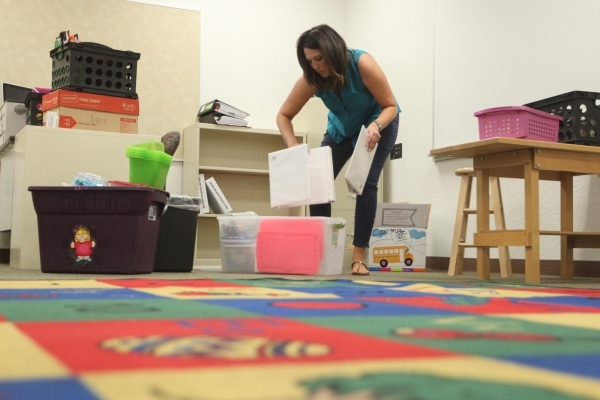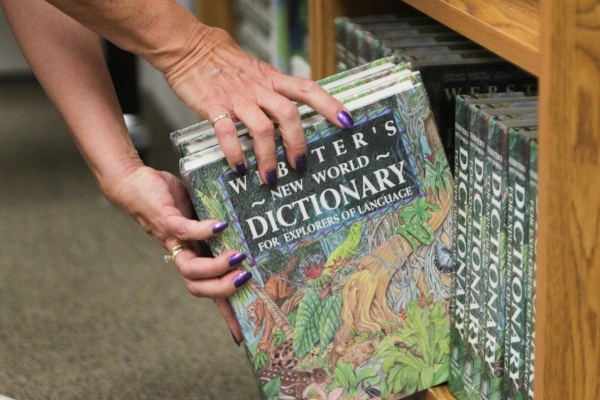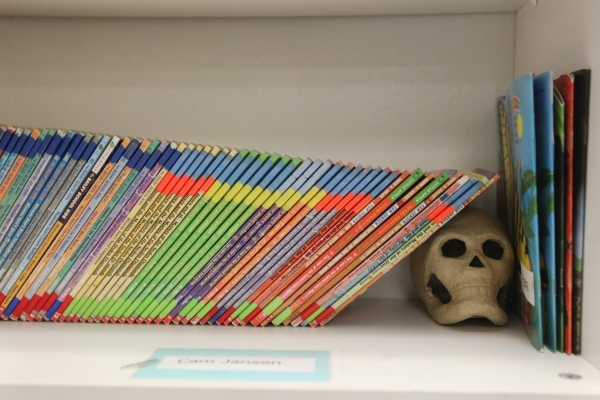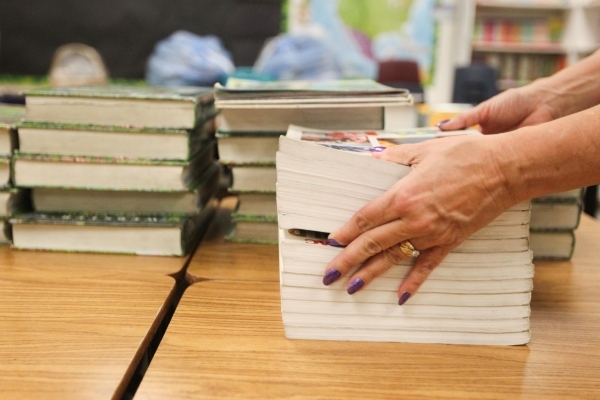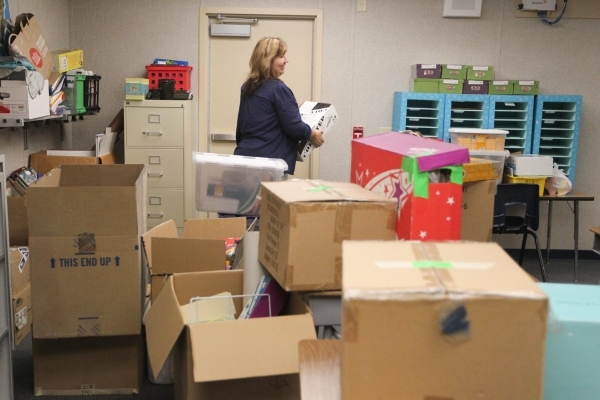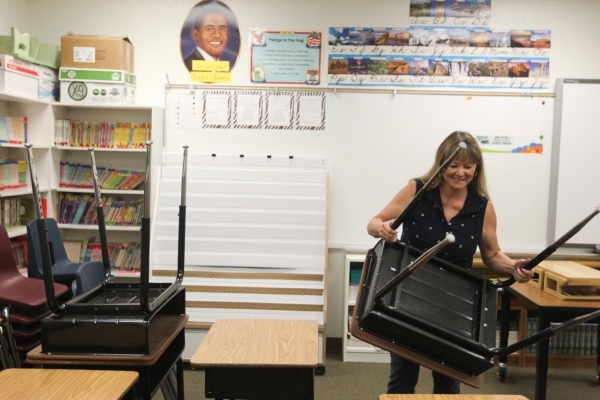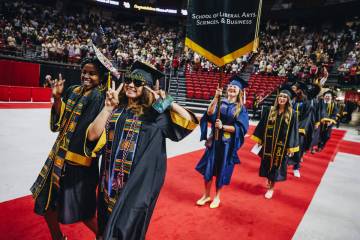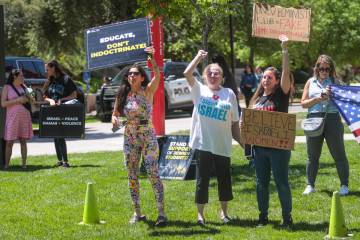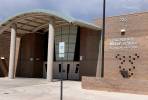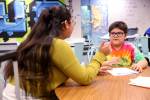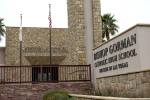Comparing Summerlin-area schools: Givens, Staton and Bonner ranked among best
The Summerlin area is known as being affluent. It has great shopping, dining, parks and amenities. But how does it stack up as far as public education? As it turns out, pretty well.
A case in point is Deskin Elementary School, 4550 N. Pioneer Way. According to schooldigger.com and the U.S. Department of Education's National Center for Education Statistics, in 2013, the latest year for which statistics are available, Deskin got a four-star rating. The study ranked it 94th out of elementary schools in the state and 71st among 210 elementary schools in the Clark County School District.
Last year, its 31 full-time teachers served 599 students.
What do parents say?
"I love Deskin," said Nash Haymond, whose son, Zachary, attends third grade there. "It's awesome because it's a smaller grammar school, and it's very situated; it's been there about 25 years. It's in a good area, and all of his teachers have been wonderful. … Everybody's always nice and helpful when you go in there."
Deskin's racial makeup includes white (40.4 percent), Hispanic (36.7 percent) and African American (11.5 percent). And 50.4 percent of students are receiving a free or discounted lunch, up 13 percent from the previous year.
"We're only Tier II," said Angela Shepard, assistant principal. "So instead of spending it on technology, we spent it on a person (staff). Technology doesn't support kids. Teachers do."
Tiers refers to students and their academic levels. All students receive Tier I instruction, which consists of normal daily instruction during school hours. Students who are classified as Tier II and III are those who are not at proficiency levels and score in the lower percentiles. Tier II students receive additional instruction during the school day. Tier III students receive extra instruction in needed areas during the day but also before and after school as they are scoring in the lowest level of percentile for one or more subjects.
Vanderburg Elementary School in Henderson is ranked No. 1 in the valley by the Department of Education. It has 806 students. Only 11.3 percent of its students are on the free or reduced lunch program.
In Summerlin, top contenders include Givens, 655 Park Vista Drive, ranked eighth for Clark County elementary schools. Only 10.1 percent of students are receiving a free or discounted lunch. Racial makeup includes white (61.6 percent), Hispanic (12.7 percent) and Asian (11.7 percent).
It is followed by Staton Elementary School, 1700 Sageberry Drive, which is ranked 14th. In 2014, Staton ranked better than 95.8 percent of elementary schools in Nevada. Racial makeup includes white (63.3 percent), Hispanic (15.1 percent) and Asian (8.6 percent). Sixteen percent of students are receiving a free or discounted lunch.
The student/teacher ratio at Staton is 18.7, which is the 50th best among 210 elementary schools in the school district.
Bonner Elementary School, 765 Crestdale Lane, is ranked 17th. In 2014, it ranked better than 94.9 percent of elementary schools in Nevada. It also ranked 10th among 210 ranked elementary schools in the school district. Racial makeup includes white (56.5 percent), Hispanic (12.9 percent) and Asian (11.5 percent). As many as 19.6 percent of students are receiving a free or discounted lunch.
McMillan Elementary, 7000 Walt Lott Drive, ranked the lowest of all Summerlin-area schools, placing 130th among 210 ranked elementary schools in the school district.
Student population at McMillan is diverse. Racial makeup includes Hispanic (41.9 percent), white (20.6 percent) and African American (19.9 percent). An estimated 72.1 percent of students receive a free or discounted lunch.
Antoinette Irby, McMillan principal, discussed the challenges at her school.
"As within our school district, education funding is the greatest challenge and the lack of additional resources to educate our students," she said in an email.
To do better, Irby said, includes setting "clear, rigorous expectations for instruction, dig deeper to increase students' knowledge and understanding of subject areas, and continue to utilize data and assessments for feedback to teachers and parents to increase student academic achievement and success."
People might say, "Oh, it's in the Summerlin area — they have all the money to have great schools." What did she say to that?
"It is a misconception and often perceived to be a school in the Summerlin area, which prohibits the students, staff and school from receiving resources that could be utilized to increase student achievement," Irby said.
Just because a school has at-risk students and a large population for whom English is not their first language does not mean they cannot succeed, said a public information officer with the school district. He cited Rogers Elementary School, 5535 S. Riley St., as an example.
"They're a five-star school, and I'm looking at their demographics between their ESL, ethnic diversity and their free and reduced lunch rate," he said, "and I'm sitting there going, 'Wow, this is a school nobody talks about.' "
Rogers has 747 students with 49.7 percent on the free or reduced lunch program. The teacher/student ratio is 20.8. The Department of Education ranks it 40th out of 331 schools in the state.
The school district has close to 317,000 students enrolled in 210 elementary schools, 66 middle schools and 55 high schools. In Summerlin, Piggott Elementary, 9601 Red Hills Road, has 702 students in its projected enrollment. Jacobson Elementary, 8400 Boseck Drive, has 623.
In Henderson, Hinman Elementary, 450 E. Merlayne Drive, has 680. But downtown's Sunrise Acres Elementary School, 211 N. 28th St., has an enrollment of 880. Of these four schools, all are Title I except for Piggott — an estimated 10 percent of its students are not fluent in English.
The school district said all schools start with the same budget.
"Funding for school sites is allocated the same for each school in the district. We do not make a distinction from a Summerlin school versus a school in North Las Vegas, for example, in terms of allocation," a spokesperson for the district said.
In 2014-15, the school district received roughly $84 million in federal Title I funding to be used at 240 district schools, up from 227 in 2013-14. To qualify, schools must have at least 40 percent of its student body in the free or reduced-price lunch program. Title I schools can receive additional per-pupil funding to help students from low-income families. The level of funding varies depending upon the tier classification of a specific school.
Tier I elementary and middle schools received $380 per pupil in 2014-15, while Tier II elementary and middle schools received $170 per pupil, and Tier III elementary and middle schools received $140 per pupil.
Still, it's not enough. The Public Education Foundation's Teacher EXCHANGE, 4350 S. Maryland Parkway, reports that teachers spend $500 of their own money, on average, to provide classroom supplies each year.
"Being the fifth-largest school district in the country, nearly 60 percent of students are on the free or reduced school lunch program," said Tim McCubbin, vice president of the Public Education Foundation's Teacher EXCHANGE. "A lot of families are concentrating on how to pay the bills — food, lodging — so, a lot of times, school supplies are secondary or fall off the radar."
What are teachers telling organizers that they need? The basics, said McCubbin.
"There's a national average that says a student goes through 60 pencils a year," McCubbin said. "It's kind of a crazy number. But if you have 30 kids, at 60 pencils per student, that's a lot of pencils. So, they're always looking for your basic supplies. A lot of teachers ask for dry erase markers. When I was a student, it was chalkboards. Now, you can't find a chalkboard anymore. It's all white boards, dry erase boards. So, markers and dry erasers are at a premium."
The Teacher EXCHANGE has repurposed more than 2 million pounds of materials worth more than $10 million since it was founded in 2002.
Vanessa Brown of Summerlin teaches 11th-grade math. This is her fourth year at Rancho High School, 1900 E. Searles Ave. Eventually, she wants to transfer to a Summerlin-area school for the commute. Her personal wish list is for more technology.
"I asked for a smart board and sent out a request (to fellow teachers), but no one responded. Some departments have them, but they don't use them that much," Brown said. "It'd be nice to have."
Jacqueline, who asked that her last name not be used, was hired to teach kindergarten at Hayes, 9620 W. Twain Ave., a Title I school. Born and raised here, she's been through the school system as a student, but this will be her first year teaching.
"I'm really hoping that there's some type of library there, books," she said. "That's my main goal, to develop a library of my own, for my own classroom. It's on the outskirts of an affluent area, so I don't know what supplies parents will be bringing in."
She said the perfect school would have large rooms and be up to date.
"Ideally, that would be fantastic to have iPads in every classroom," Jacqueline said. "Typically, within a team of teachers or a grade of teachers, they will have to share iPads. It would be ideal to have them for every student, especially kindergarten, to offer a good foundation in technology."
To help students learn, the school district is keeping up with the 21st century by allowing schools to transition to iPads. Each school decides if that is a viable choice given that the least expensive, the 16 GB with Wi-Fi, costs $299. According to the district's purchasing department, it receives an educational rate that equates to $20 off the commercial price for each iPad or $25 off each if purchased in lots of 10, which it usually does.
"A lot of the rooms are being divided now," Jacqueline said. "The mandate is supposed to be 21 students. … the classrooms are being divided in half with two teachers using that space. It's difficult because children need more room. But, you have to make do with what you get."
— To reach Summerlin Area View reporter Jan Hogan, email jhogan@viewnews.com or call 702-387-2949.



